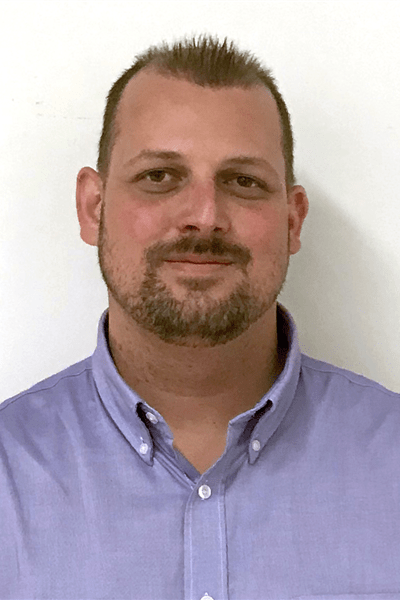
Stephen Schlecht, PhD
Assistant Professor of Orthopaedic Surgery
Adjunct Assistant Professor of Anatomy, Cell Biology & Physiology
- Phone
- (317) 278-3432
- Address
-
MS 5067
ORTS
IN
Indianapolis, IN - PubMed:
-

Bio
My lab studies the anterior cruciate ligament (ACL), including its development, function and response to loading. These studies use a basic, translational, and clinical research approach. Long-term goals of this research is to improve preventative injury diagnostics while also improving ACL reconstruction outcomes in the young.
| Year | Degree | Institution |
|---|---|---|
| 2012 | PhD | The Ohio State University |
| 2004 | M.Sc. | University of Sheffield |
| 2002 | BSC | University of Wisconsin-La Crosse |
Current dogma is that over abduction of the knee during a pivot-shift or jump-landing results in a single overload failure of the anterior cruciate ligament (ACL). My short-term goal is to test whether the majority of these injuries could in fact be more a consequence of accumulated fatigue damage. Using my diverse background in evolutionary theory, anatomical structure, and soft and hard tissue biology, my current research focuses on the variation among traits comprising the entheseal complex (i.e. insertion site of ligaments and tendons), and how this structure responds to mechanically-induced fatigue damage. Characterizing how fatigue-damage accumulates and may result in catastrophic tissue failure in the short-term, may allow us to identify clinical intervention windows during growth in the long-term, wherein the tissue may be biologically repaired before exceeding some failure threshold. To rigorously and systematically investigate the development, mechanical response, and fatigue-failure mechanism of entheses using a multiscalar approach (i.e. macro-, micro-, and ultrastructural and molecular levels) our federally and institutionally funded research program is both anti- and pro-translational. Collaborating with orthopaedic clinicians, engineers, and chemists, our lab is characterizing the multi-scalar development and mechanical response of the ACL entheseal complex in a murine model. This model is being used to test hypotheses arising from ongoing human cadaveric and surgical explant tissue research being conducted in tandem with my co-investigators. This model will also stimulate innovative hypotheses that may be further explored in cadaveric and living patients.
With funding support from NIH/NIAMS K99/R00, NIH/NIAMS LRP and institutional awards, our lab is currently phenotypically and genotypically characterizing the ACL entheseal complex in various mouse (A/J, C57BL6/J) and rat (Sprague-Dawley) models that mirror the bony and soft tissue variation we have characterized in humans. Additionally, we are investigating how the multiscalar ACL entheseal structures respond to voluntary cage-wheel activity and in vivo mechanical loading during the pre- and pubertal stages of growth. Findings from these studies can then be compared to data we are simultaneously collecting from human cadaveric in vitro mechanical loading tests and patient explant tissue removed from children and adolescents at the time of ACL reconstructive surgery. These additional research arms will not only help validate the translational potential of the murine models but also generate injury-related hypotheses that can be tested in these pre-pubescent and adolescent murine models.
Related to our research using surgical explant ACL entheseal tissue, we are also characterizing the bony changes that occur in the joint from the time of injury up until the time of primary ACL reconstructive surgery. Bone mineral density (BMD) measures taken after injury and at various time points following ACL reconstructive surgery suggest there is significant bone loss about the knee joint following injury that is never fully recovered post-surgery. However, BMD data is not localized to the bony matrix at the point of ACL insertion (wherein an ACL graft would be placed). Establishing multi-scalar osseous changes occurring within the mineralized fibrocartilaginous, cortical and trabecular matrices comprising the ACL femoral and tibial entheses post-injury up until the point of reconstructive surgery, will help identify a clinical window wherein the homeostatic state of bone is suitable for primary graft fixation and effective osseointegration. It is our hope to inform clinicians of when an auto- or allo-graft is most likely to biologically integrate with a patient’s existing epi/metaphyseal bone tissue to provide a structurally-sound ACL graft; reducing the probability of a primary graft failure and rupture downstream. This information can then be used to improve pre-surgical rehabilitative protocols prior to reconstructive surgery so that patients are in the best position possible to receive a graft when their existing epi/metaphyseal bone is at its most ‘optimal’ post-injury state.
Desc: Outstanding Postdoctoral Fellow Award in Research, Mentorship, Leadership and Service
Scope: University
Date:
Desc: Alice L. Jee Young Investigator Award
Scope: International
Date:
Desc: Young Investigator Award
Scope: International
Date:
Desc: Young Investigator Award
Scope: International
Date: